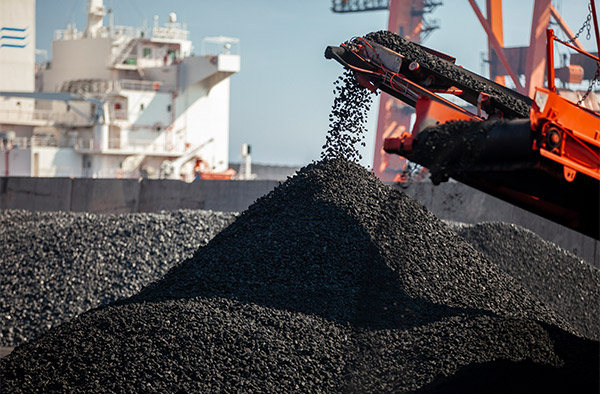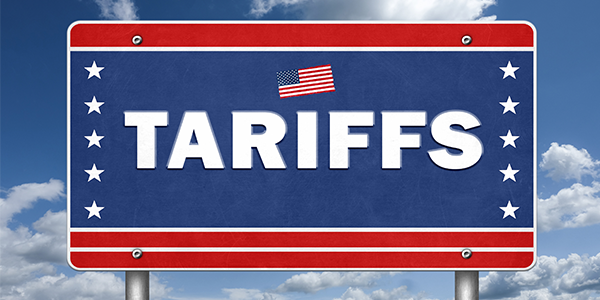

BlackRock Says Bitcoin Deserves a Spot in Your Portfolio
If you happen to be a Bitcoin skeptic, you’re not alone. A recent Pew Research survey found that 63% of Americans are not confident in the reliability or safety of cryptocurrencies in general.
But when BlackRock speaks, it often pays to listen.
In its just-released 2025 Global Outlook report, the world’s largest asset management firm lays out a case for Bitcoin not only as a diversifier alongside gold but also a strategic hedge against an environment where the historical stock-bond correlation is breaking down.
For decades, the classic 60/40 portfolio—60% stocks, 40% bonds—was the gold standard of diversification. When stocks crashed, as they did during the dotcom bubble and global financial crisis, bonds usually rose in value, providing a cushion against market volatility.
But we’re in a new regime now where this correlation has become increasingly unreliable. If you recall, 2022 was the worst year on record for U.S. stocks and bonds.
BlackRock identifies this trend and suggests that investors need to look beyond government bonds for diversification. This is where gold and Bitcoin come into play. Both assets offer unique advantages as hedges and diversifiers, but they do so in different ways.
BlackRock’s Case for a 2% Bitcoin Allocation
Bitcoin’s potential as a portfolio diversifier stems from its unique value proposition. It has a fixed supply of 21 million coins, and its demand is influenced by adoption trends, investor sentiment and macroeconomic factors. In the days following the November election, Bitcoin surged above $100,000, with its market cap topping $2 trillion—just under 2% of the total value of global equities.

On Thursday, Bitcoin tumbled 3.6%, falling back below $100,000, on the news that the Federal Reserve will approve fewer interest rate cuts than the market expected next year.
BlackRock isn’t suggesting that Bitcoin should replace bonds in your portfolio. Instead, they’re recommending a modest allocation—1% to 2%—to capture its diversification benefits without significantly increasing risk. In fact, a 2% Bitcoin allocation provides a similar risk profile to holding the “Magnificent Seven” tech stocks (Apple, Microsoft, Nvidia, Amazon, Alphabet, Meta and Tesla) in a balanced portfolio.
A Market Cap That Can’t Be Ignored
Even though Bitcoin’s market cap has fallen below $2 trillion, it remains the seventh-largest asset in the world, ahead of Saudi Aramco and even silver. The global gold market, by comparison, is valued at $17.8 trillion—nine times larger than Bitcoin.
But Bitcoin’s growth trajectory is undeniable. Before its price declined, it took 40 ounces of gold to buy one Bitcoin. That’s roughly double what it was at the beginning of the year.

Galaxy Digital’s Mike Novogratz believes Bitcoin could match and even surpass gold’s $17 trillion market cap within the next five to eight years. That’s a bold prediction, but it’s not without merit. As more investors, institutions and nations adopt Bitcoin, its scarcity becomes more pronounced, potentially driving prices higher.
Dogecoin: The Fun Alternative with Real Utility
While Bitcoin has established itself as digital gold, Dogecoin has carved out a niche as a lighthearted, community-driven cryptocurrency with surprising staying power. Originally launched as a joke in 2013, Dogecoin has since grown into a legitimate digital asset with a market cap in the tens of billions.
Dogecoin’s appeal lies in its utility for microtransactions. It’s used mostly to tip content creators and foster online engagement. Its low transaction fees and fast processing times make it an ideal currency for small, everyday payments. Unlike Bitcoin’s fixed supply, Dogecoin has no hard cap, which helps keep its price stable for transactional use.
Elon Musk’s longtime support of Dogecoin has contributed to its growing popularity. News that President-elect Trump plans to appoint Musk to co-lead the newly formed Department of Government Efficiency, or DOGE, has added to the speculation and excitement. Since the election, Dogecoin has significantly outperformed Bitcoin.

While it’s still seen as a “meme coin,” Dogecoin’s growing user base and real-world utility suggest that it might deserve a closer look from investors. There’s even talk of a Dogecoin ETF next year.
The Case for a Modest Allocation
BlackRock’s research makes a compelling case for a 1% to 2% allocation to Bitcoin. I believe this relatively small position can provide meaningful diversification benefits without exposing your portfolio to excessive risk. And as Bitcoin’s market cap continues to grow, that modest allocation could deliver outsized returns.
Remember, Bitcoin is still a volatile asset. But so was gold during the 1970s when it was reintroduced to the free market after the collapse of the Bretton Woods system. I’ve been in this game for decades, and what I know is that over time, volatility tends to decline as an asset becomes more widely adopted.
Gold will always have a place in my portfolio as the ultimate store of value. But it’s also important to stay open to new opportunities. Bitcoin represents a new frontier in wealth preservation and growth, and even the most conservative investors can no longer afford to ignore it.
On behalf of our team at U.S. Global Investors, Merry Christmas and Happy Holidays!

Index Summary
- The major market indices finished down this week. The Dow Jones Industrial Average lost 2.25%. The S&P 500 Stock Index fell 1.99%, while the Nasdaq Composite fell 1.78%. The Russell 2000 small capitalization index lost 4.45% this week.
- The Hang Seng Composite lost 5.32% this week; while Taiwan was down 2.22% and the KOSPI fell 3.62%.
- The 10-year Treasury bond yield rose 13 basis points to 4.53%.
Airlines and Shipping
Strengths
- The best performing airline stock for the week was Frontier, up 7.0%. Embraer announced that Luxair, the flag carrier of Luxembourg, has signed a firm order for two E195-E2. Assuming each aircraft listing price at $85 million, this order should add around $170 million to Embraer’s backlog (+1% of the third quarter 2024 level of $22.7 billion), according to JP Morgan.
- As reported by Stifel, shipping supply is likely to end the year up almost exactly 10% while the number of container movements is up about 5.5%. This is well below supply growth with the difference being entirely attributable to ton-mile growth (i.e. the average length of voyage). For last year, that translated into an extra 12% supply reduction. The ton mile growth can be entirely attributed to ships avoiding the Red Sea.
- China further relaxed its visa-free transit policy, reports UBS, extending stay periods to 240 hours, up from 144 previously (for 54 countries). Twenty-one new ports are added as eligible exit-entry ports (to a total of 60). In addition, the permitted stay area is expanded to 24 provinces from 19.
Weaknesses
- The worst performing airline stock for the week was Air Canada, down 13.1%. According to TD, the Consumer Protection Financial Bureau issued an enforcement bulletin that dynamic awards pricing may constitute as “bait-and-switch” behavior and deceptive practices. Airline loyalty programs are cited throughout bulletin. Ultimately, this may lead to a fixed miles-to-USD rate at lower value.
- Global air cargo demand has slowed to broadly mid-single digit year-over-year growth in the second half of November and the first half of December, down from double digit year-over-year growth for most of 2024. Bank of America suggests this is due to slower eCommerce growth on tougher comps, although eCommerce volumes out of Asia remain strong.
- The recent agreements with lessors and bondholders of Azul are crucial steps in reducing leverage and generating cash flow through equity conversion. However, the dilution from bondholders remains a concern, and UBS estimates that equity dilution could be as high as 80%.
Opportunities
- Air Canada is trying to be a first mover when it comes to AI. Artificial intelligence is being used for timing fuel purchases, timing maintenance, altering schedule timing, improving turnaround times, sending meal and transportation vouchers for delayed customers and managing seat inventories and seat pricing.
- Goldman sees potential upside risk for container shipping in the near term considering major shipping lines are trying to raise spot rates with container lines’ proactive capacity control, increasing shipments before an earlier Lunar New Year, and a U.S. tariff hike.
- American Airlines expects a busy holiday season. Ahead of Christmas week, the carrier is preparing for 12.7 mm customers across 118,000 flights (from December 18 through January 6), and expects December 27 to be the busiest travel day, according to Morgan Stanley.

Threats
- United Airlines lowered system capacity by 390/440 basis points (bps) in April/May, driven by lower Atlantic (-530bps/-480bps) and Pacific (-19.0%/-19.6%) capacity. Bank of America reports that the airline is removing some routes and frequencies that have not yet resumed post-pandemic from its schedules.
- According to JP Morgan, the Red Sea situation is hard to read, but Nippon Yusen expects new shipbuilding to peak in 2024 and decline in 2025. Vessel scrapping was low in 2024, and the outlook for 2025 is unclear. New vessels have added 3 million TEU of capacity, but 2 million TEU was absorbed by Suez Canal avoidance. Shippers could scale back service amid a decline in shipping activity after the Lunar New Year.
- The head of the FAA, who was confirmed to serve a five-year term as FAA administrator in October 2023, will step down on January 20, reports CNBC. Over the past few years the FAA has seen several changes in leadership, but in a recent statement Mr. Whitaker noted that, “You have seen leadership come and go — and through every transition you have kept air travel steady and safe. This transition will be no different.” Mr. Whitaker’s tenure was well received by the airlines, so it remains to be seen how this transition affects Airline-FAA relations.
Luxury Goods and International Markets
Strengths
- Ferrari’s used Purosangue cars are selling $400,000 above the sales price, hitting a market price of $700,000. It is Ferrari’s first production four-door vehicle, and competes with high-performance SUVs such as the Lamborghini Urus and Aston Martin DBX. The model is sold out until 2026.
- The Eurozone Service PMI, a key economic indicator that measures the health of the services sector has finally crossed above the 50-mark, primarily driven by stronger activity in Germany. Meanwhile, the U.S. Service PMI surprised positively, with the index coming in at 58.5, well above the expected 55.8. A reading above 50 indicates expansion, while below 50 suggests contraction.
- Real Real, online marketplace for sale of lxuruy goods in the United States, was the top-performing stock in the S&P Global Luxury sector, gaining 36.26% in the past five days. Wells Fargo said the company share could double due to structural changes.
Weaknesses
- China reported weaker-than-expected retail sales data, putting additional pressure on policymakers to implement further stimulus measures. In November, retail sales increased by just 3% year-over-year, well below the expected increaes of 5%.
- Year-to-date (from January to November), Swiss watch shipments fell 3%, hurt by 47% exposure to Asia, where China and Hong Kong were the main drag. In the month of November, exports declined by 4%. The United States is the only market recording rebust gains.
- Cettire, Austrailan online marketplace for sale of lxuruy goods to customer worldwide, was the worst-performing stock in the S&P Global Luxury Index, falling 14.5%. Shares declined despite low news activity.
Opportunities
- Many luxury sector analysts were expecting an improvement in the second half of this year; however, this did not materialize, primarily due to much weaker demand for luxury goods and services from China. The sector is projected to be flat or slightly down in 2024. Bloomberg’s Deborah Aiken predicts the sector will grow between 5%-6% next year. The gap between luxury-good revnue in the U.S. and China could narrow in the medium- and longer-term.

- Amazon has launched a new program called Amazon Auto, allowing customers in 48 U.S. cities to buy new Hyundai cars directly from Amazon. Customers can complete the entire checkout process through Amazon, which also offers financing options and the option to trade in an older car to help pay off the new vehicle.
- Tesla’s Cybertruck has received an Automobile Energy Consumption Label from China’s Ministry of Industry and Information Technology, signaling that the debut of the Cybertruck in China may be approaching. The Cybertruck’s debut in China could generate significant interest and generate more revenue for the company.
Threats
- Last Friday, the ratings agency Moody’s downgraded France’s credit rating from “Aa2” to “Aa3,” three levels below its highest rating. Competing credit rating agencies S&P and Fitch have already lowered France’s rating to similar levels. The country’s fiscal deficit has been increasing, and the newly appointed Prime Minister, François Bayrou, will face a challenging task in reducing it.
- Private equity firm Carlyle has announced a pause in its luxury investment activities due to rising costs and inflationary pressures. Traditionally recognized for its bold investments in premium brands and luxury goods, the firm played a key role in launching the Golden Goose IPO in 2021. Golden Goose, an Italian luxury fashion brand, has made a significant impact in the luxury footwear industry in recent years, with its products frequently spotted on celebrities like Taylor Swift and Chris Hemsworth.
- U.S. equities sold off on Wednesday after policymakers cut interest rates by 25 basis points as expected, but the Federal Reserve adopted a more hawkish tone than anticipated. In coming months, market volatility could increase depending on upcoming economic data and political developments, especially with Donald Trump set to return to the White House next month.

Energy and Natural Resources
Strengths
- The best-performing commodity of the week was natural gas, gaining 14.97%. According to Morgan Stanley, the U.S. energy sector continues to trade at a 53% discount to the S&P 500 on 2025 EV/EBITDA, double the average discount over the past decade. Oil exploration and production (E&P) companies are pricing in a long-term WTI oil price of $62 per barrel, which is 11% below the 2025 futures strip of $69 per barrel.
- According to JP Morgan, commercial crude inventories fell for the fourth consecutive week, declining by 934,000 barrels. Meanwhile, the Strategic Petroleum Reserve (SPR) increased for the 53rd straight week, rising by 519,000 barrels. The draw in inventories was driven by reduced net imports and lower production.
- According to JP Morgan, jet fuel inventories drew for the third time in four weeks, by 575,000 barrels. The draw was driven by lower production and lower net imports, partially offset by lower demand.
Weaknesses
- The worst-performing commodity of the week was palm oil, falling 7.95%. According to Goldman Sachs, European natural gas prices saw a sharp decline due to milder weather forecasts and increased regional LNG imports. The TTF benchmark fell 11% to €39.9 per megawatt-hour (MWh).
- According to UBS, high-CV thermal coal prices have declined from $150 per ton in October to $130 per ton. This drop is due to stable supply and weakening demand caused by a warmer-than-expected start to winter, leading to elevated stock levels. UBS expects prices to stay within a range of $120 to $140 per ton in 2025.
- Iron ore declined by 5% over the past week to $102 per ton. The price move appears to be driven by dampening sentiment on China after November activity data missed expectations, according to Goldman.
Opportunities
- For U.S. natural gas, Morgan Stanley maintains a positive outlook for 2025, expecting storage levels to shift into deficit by the third quarter and finish October 7% below normal. Their 2025 Henry Hub forecast of $3.75 per million British thermal units (MMBTU) suggests a 16% upside to futures prices. Additionally, supportive policies under President-elect Trump and growth in data center-related opportunities could drive a re-rating in gas producer valuations.

- Shares in Australian synthetic graphite maker Novonix Ltd. surged after it received a conditional $755 million loan from the U.S. Department of Energy to build a manufacturing plant in Tennessee. Novonix rose as much as 16% on Tuesday, valuing the company at A$349 million, according to Bloomberg.
- Volkswagen has bought a 9.9% stake in Patriot Battery Metals, amounting to $48 million. The Canadian lithium company announced this investment on Wednesday of this week, which marks the first time the German carmaker has directly invested in the lithium supply chain. Volkswagen isn’t the first automaker to do so, nor will it be the last as cars tilt the scales towards cleaner energy alternatives, Mining.com reports.
Threats
- New offshore wind farm capacity reaching final investment decisions dropped to the lowest since 2016 as soaring costs and supply chain bottlenecks disrupt investment in a technology that’s key to cutting fossil fuels. Analysts at Bloomberg NEF tracked just 7.2 gigawatts of new offshore wind farms financed this year, down 72% from 2023.
- A rapid shift to electrification in China, the world’s largest fuel importer, is unsettling the global oil market. China’s oil refining activity has stalled following a surge in new-energy vehicle sales, which overtook internal combustion engine (ICE) vehicle sales in July. Since then, concerns over an oil glut have been reflected in the forward market. BloombergNEF projects that ICE vehicles will make up just 17% of China’s vehicle market by 2030.
- JP Morgan anticipates a shift in the global oil market from a balance in 2024 to a large 1.2 million-barrels-per-day (mbd) surplus in 2025, followed by another 0.9 mbd surplus in 2026. Demand is not the primary concern, as global oil demand growth is expected to slow from 1.3 mbd this year to 1.1 mbd next year, before rebounding to 1.3 mbd in 2026.
Bitcoin and Digital Assets
Strengths
- Of the cryptocurrencies tracked by CoinMarketCap, the best performer for the week was Pudgy Penguins, rising 478%.
- Bitcoin’s rise to record highs earlier this week is expected to allow miners to extend their November profitability into December, according to a research report by Jefferies. Bitcoin mining economics improved in November as the average price of bitcoin was 31% higher while the average network hash rate rose by almost 4%, writes Bloomberg.
- Executives in the digital asset industry are joining the ranks of tech CEOs making their trip to Mar-a-Lago to meet with President-elect Donald Trump before his impending return to the White House, according to Bloomberg. Kris Marszalek, the CEO of Crypto.com, met with President Trump at the Florida golf resort on Monday to discuss the crypto industry.
Weaknesses
- Of the cryptocurrencies tracked by CoinMarketCap, the worst performing for the week was Aerodrome Finance, down 33%.
- Bitcoin fell for the first time in four days, reports Bloomberg, with speculative bets being pared across the financial markets after Federal Reserve officials suggested greater caution over how quickly they can continue reducing borrowing costs. Bitcoin fell as much as 5.3% to $100,000 after reaching $108,000 for the first time this year.

- The U.S. Treasury Department sanctioned two individuals and one entity for laundering cryptocurrencies for the North Korean Democratic People’s Republic of Korea. Two Chinese nationals helped the crypto money laundering as part of a more extensive illicit network headed by a sanctioned banking representative, writes Bloomberg.
Opportunities
- A Blackrock fund bought municipal debt issued earlier this year, writes Bloomberg, in a first-of-its-kind deal that relies exclusively on blockchain technology. Blackrock purchased the bonds through an actively managed ETF called the iShares Short Maturity Municipal Bond active ETF.
- MicroStrategy’s entry into the Nasdaq 100 opens up the largest corporate holder of Bitcoin to a new and untapped investor: the index tracking juggernauts. MicroStrategy’s Nasdaq admittance, scheduled for after the close of trading Friday, looks poised to prompt passive investors to buy roughly $2 billion of shares, according to Bloomberg.
- Hyperliquid, the decentralized perpetual trading platform and Layer 1 blockchain, has seen over $1 billion worth of USDC net inflows into the chain since the launch of its native token Hype, according to blockchain analytics firm Spot on Chain. The platform’s deposit bridge currently holds over $2.1 billion worth of USDC stablecoin, Bloomberg reports.
Threats
- North Korea-linked hackers stole more from cryptocurrency platforms this year than ever before, writes Bloomberg, showcasing the rising capabilities that researchers say threaten U.S. national security. Digital thieves linked to North Korea utilize advanced methods such as manipulating remote work opportunities and are responsible for more than half of the total $2.2 billion stolen from platforms in 2024.
- “Hawk Tuah” cryptocurrency sellers and promoters never registered the U.S.-marketed meme coin with the SEC and left investors out to dry during a 90% crash, a lawsuit filed on Thursday said. The investors said they lost more than $151,000 combined after investing in the cryptocurrency modeled after “Hawk Tuah Girl,” writes Bloomberg.
- More than 500 retail clients of Oztures Trading, trading as Binance Australia Derivatives, were denied important consumer protection after being misclassified as wholesale clients, according to Bloomberg. Many of these clients saw financial losses and Binance paid $13 million to these customers for their losses.

Defense and Cybersecurity
Strengths
- Northrop Grumman secured a $3.46 billion contract for designing, developing and integrating subsystems for the E-130J aircraft, with work distributed across multiple U.S. locations and completion expected by December 2034.
- Palantir Technologies secured a $618.9 million contract extension with the U.S. Army to enhance its Army Vantage data platform, integrating over 180 data sources for 100,000+ users and maintaining its infrastructure while expanding its reach across the Army enterprise.

Weaknesses
- Russian president Vladimir Putin announced that Russia recruited over 430,000 new troops this year amid the war in Ukraine, claiming a strategic turning point and ongoing battlefield advances despite significant casualties.
- The Pentagon confirmed that North Korean soldiers entered combat last week in Russia’s Kursk region, where at least 30 were reportedly killed or injured.
- The worst performing stock in the XAR ETF this week was Loar Holdings, falling %, after
Opportunities
- Dassault Aviation unveiled a stealth drone designed to operate alongside its Rafale F5 jet fighter, controlled directly by the aircraft.
- Czechoslovak Group, owned by Czech billionaire Michal Strnad, acquired Vista Outdoor’s ammunition unit for $2.2 billion, making it the largest non-China/Russia producer of small-caliber ammunition and significantly expanding its production capacity to serve NATO military clients.
- Underwater drones like Boeing’s Orca, BAE System’s Herne and Anduril’s Ghost Shark are being developed to operate autonomously for days, diving thousands of feet to gather intelligence and counter threats.
Threats
- Israel has advanced into Syria, targeting weapons depots and military sites while remaining unconvinced by statements from Syria’s new leadership, whom it accuses of harboring extremist agendas.
- Ukraine carried out the assassination of Russian Lieutenant General Igor Kirillov, head of Russia’s radiological, chemical and biological defense forces, and his assistant in a Moscow bomb explosion. The attack targeted them for their role in the widespread use of banned chemical weapons against Ukrainian troops.
- Turkey and its allied armed groups are building up forces along the Syrian border, signaling a threat of future escalation in Syria.
Gold Market
This week gold futures closed at $2642.10, down $33.70 per ounce, or 1.26%. Gold stocks, as measured by the NYSE Arca Gold Miners Index, ended the week lower by -5.92%. The S&P/TSX Venture Index came in off 3.45%. The U.S. Trade-Weighted Dollar rose 0.74%.
Strengths
- The best performing precious metal for the week was platinum, up 0.15%. India’s trade deficit expanded to a record high in November, as the nation’s import bill ballooned, particularly due to a rise in gold shipments. The gap between exports and imports stood at $37.8 billion in November, trade ministry data showed Monday, much higher than the $23 billion deficit forecast by economists in a Bloomberg survey. Trade deficit in October stood at $27.1 billion.
- Torex Gold reports that Mexico’s Director General of Mines under the Federal Ministry of Economy has lifted the temporary suspension notice and allowed for all activities within the Morelos Complex to resume, including open pit and underground mining, processing operations and all activities associated with the Media Luna Project, according to Scotia.
- According to CIBC, Dundee Precious Metals has announced the results of its pre-feasibility study (PFS) for the Čoka Rakita project in Serbia. The company aims to complete a feasibility study by the end of 2025, with first gold concentrate production expected in the second half of 2028. Assuming a gold price of $1,900 per ounce, the project’s net present value (NPV) and internal rate of return (IRR) have risen to $735 million and 41%, respectively. This marks an increase from the $588 million NPV and 33% IRR based on a $1,700 per ounce assumption outlined in the preliminary economic assessment (PEA) filed earlier this year.

Weaknesses
- The worst performing precious metal for the week was palladium, down 3.52%. Gold slipped along with most commodities and equity markets, as traders face a rush of interest-rate decisions by major central banks, including the Federal Reserve. Bullion traded near $2,640 an ounce, after notching a modest gain in the previous session as investors parsed mixed U.S. data, according to Bloomberg.
- Barrick reports a substantial deterioration of its operating conditions in Mali, following its ongoing dispute related to government requests for an increased share of mine economics. This includes blocked gold shipments and prior-reported employee arrests in the media. Barrick notes that it may be required to suspend operations if gold shipments remain blocked, according to RBC.
- The metal’s landscape and risk assets saw a rebound following a sharp sell-off in after the Federal Open Market Committee’s (FOMC) December interest rate decision. Causing the move was the change in the dot plot where the median dot is now at 3.75%-4%, suggesting only an additional 50 basis points of easing throughout 2025, according to CIBC.
Opportunities
- Franco Nevada announced that its subsidiary has entered a $500 million precious metals stream (gold, platinum, palladium, and rhodium; 70% gold and 30% PGM) agreement with Sibanye-Stillwater. The agreement covers specific production from SSW’s Marikana, Rustenburg and Kroondal mining operations in South Africa’s Bushveld Complex and provides immediate cash flow, according to Scotia.
- With spot gold hovering near record highs around $2,700 per ounce, conditions appear favorable for a broader gold equity rally in 2025. BMO expects investors to remain selective in the first half of the year, waiting for more clarity on cost management and capital allocation strategies. Overall, BMO favors stable, low-cost producers, undervalued companies approaching free cash flow (FCF) growth, and developers with substantial resource inventories.
- Gold is likely to set a record high of $2,900 an ounce next year on strong investments into bullion, robust physical buying, and higher purchases by central banks, according to ANZ Banking Group. That would be about 9% higher than current levels.
Threats
- Several news outlets reported this week on a proposed mining tax in Bulgaria targeting “underground resources.” The latest proposals suggest this tax could be implemented as a one-time payment next year. According to Scotia, Dundee Precious Metals could face negative impacts from this higher tax, as nearly two-thirds of its asset net asset value (NAV) and all of its estimated 2025 production come from Bulgaria.
- Raymond James has updated their forecasts for 4Q prices. They expect 2024 gold production to be near the bottom end of Centerra’s guidance of 370,000-410,000 ounces. They expect 2024 all-in-sustaining cost (AISC) on a by-product basis to be near the lower end of guidance of $1075-$1175 per ounce.
- According to BMO, while the Čoka Rakita project helps alleviate some concerns about Dundee Precious Metals’ production growth, a decline in production is still anticipated between 2026 and 2028.


U.S. Global Investors, Inc. is an investment adviser registered with the Securities and Exchange Commission (“SEC”). This does not mean that we are sponsored, recommended, or approved by the SEC, or that our abilities or qualifications in any respect have been passed upon by the SEC or any officer of the SEC.
This commentary should not be considered a solicitation or offering of any investment product. Certain materials in this commentary may contain dated information. The information provided was current at the time of publication. Some links above may be directed to third-party websites. U.S. Global Investors does not endorse all information supplied by these websites and is not responsible for their content. All opinions expressed and data provided are subject to change without notice. Some of these opinions may not be appropriate to every investor.
Holdings may change daily. Holdings are reported as of the most recent quarter-end. The following securities mentioned in the article were held by one or more accounts managed by U.S. Global Investors as of (09/30/2024):
Embraer
Air Canada
American Airlines
The Boeing Co.
Ferrari NV
Amazon.com Inc.
Tesla Inc.
Torex Gold Resources Inc.
Dundee Precious Metals Inc.
Barrick Gold Corp.
Franco-Nevada Corp.
Volkswagen AG
Frontier Group Holdings Inc.
*The above-mentioned indices are not total returns. These returns reflect simple appreciation only and do not reflect dividend reinvestment.
The Dow Jones Industrial Average is a price-weighted average of 30 blue chip stocks that are generally leaders in their industry. The S&P 500 Stock Index is a widely recognized capitalization-weighted index of 500 common stock prices in U.S. companies. The Nasdaq Composite Index is a capitalization-weighted index of all Nasdaq National Market and SmallCap stocks. The Russell 2000 Index® is a U.S. equity index measuring the performance of the 2,000 smallest companies in the Russell 3000®, a widely recognized small-cap index.
The Hang Seng Composite Index is a market capitalization-weighted index that comprises the top 200 companies listed on Stock Exchange of Hong Kong, based on average market cap for the 12 months. The Taiwan Stock Exchange Index is a capitalization-weighted index of all listed common shares traded on the Taiwan Stock Exchange. The Korea Stock Price Index is a capitalization-weighted index of all common shares and preferred shares on the Korean Stock Exchanges.
The Philadelphia Stock Exchange Gold and Silver Index (XAU) is a capitalization-weighted index that includes the leading companies involved in the mining of gold and silver. The U.S. Trade Weighted Dollar Index provides a general indication of the international value of the U.S. dollar. The S&P/TSX Canadian Gold Capped Sector Index is a modified capitalization-weighted index, whose equity weights are capped 25 percent and index constituents are derived from a subset stock pool of S&P/TSX Composite Index stocks. The NYSE Arca Gold Miners Index is a modified market capitalization weighted index comprised of publicly traded companies involved primarily in the mining for gold and silver. The S&P/TSX Venture Composite Index is a broad market indicator for the Canadian venture capital market. The index is market capitalization weighted and, at its inception, included 531 companies. A quarterly revision process is used to remove companies that comprise less than 0.05% of the weight of the index, and add companies whose weight, when included, will be greater than 0.05% of the index.
The S&P 500 Energy Index is a capitalization-weighted index that tracks the companies in the energy sector as a subset of the S&P 500. The S&P 500 Materials Index is a capitalization-weighted index that tracks the companies in the material sector as a subset of the S&P 500. The S&P 500 Financials Index is a capitalization-weighted index. The index was developed with a base level of 10 for the 1941-43 base period. The S&P 500 Industrials Index is a Materials Index is a capitalization-weighted index that tracks the companies in the industrial sector as a subset of the S&P 500. The S&P 500 Consumer Discretionary Index is a capitalization-weighted index that tracks the companies in the consumer discretionary sector as a subset of the S&P 500. The S&P 500 Information Technology Index is a capitalization-weighted index that tracks the companies in the information technology sector as a subset of the S&P 500. The S&P 500 Consumer Staples Index is a Materials Index is a capitalization-weighted index that tracks the companies in the consumer staples sector as a subset of the S&P 500. The S&P 500 Utilities Index is a capitalization-weighted index that tracks the companies in the utilities sector as a subset of the S&P 500. The S&P 500 Healthcare Index is a capitalization-weighted index that tracks the companies in the healthcare sector as a subset of the S&P 500. The S&P 500 Telecom Index is a Materials Index is a capitalization-weighted index that tracks the companies in the telecom sector as a subset of the S&P 500.
The Consumer Price Index (CPI) is one of the most widely recognized price measures for tracking the price of a market basket of goods and services purchased by individuals. The weights of components are based on consumer spending patterns. The Purchasing Manager’s Index is an indicator of the economic health of the manufacturing sector. The PMI index is based on five major indicators: new orders, inventory levels, production, supplier deliveries and the employment environment. Gross domestic product (GDP) is the monetary value of all the finished goods and services produced within a country’s borders in a specific time period, though GDP is usually calculated on an annual basis. It includes all private and public consumption, government outlays, investments and exports less imports that occur within a defined territory.
The S&P Global Luxury Index is comprised of 80 of the largest publicly traded companies engaged in the production or distribution of luxury goods or the provision of luxury services that meet specific investibility requirements.
FTSE All-World Index is a free float market cap-weighted index representing the performance of the large & mid cap stocks from the FTSE Global Equity Index Series.






























